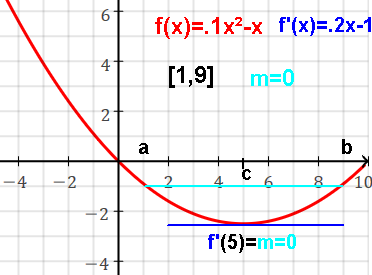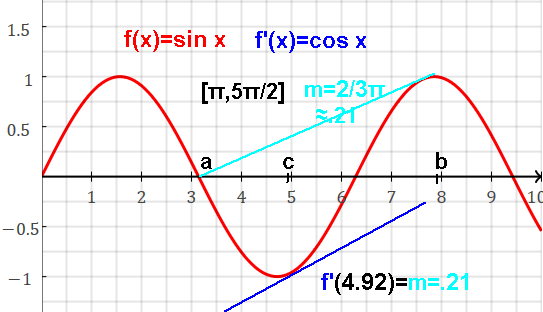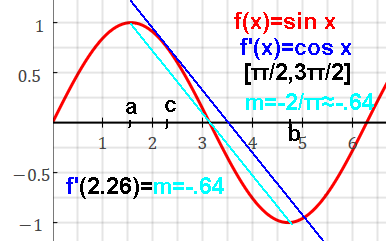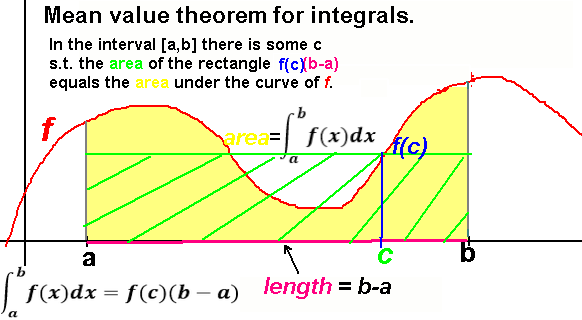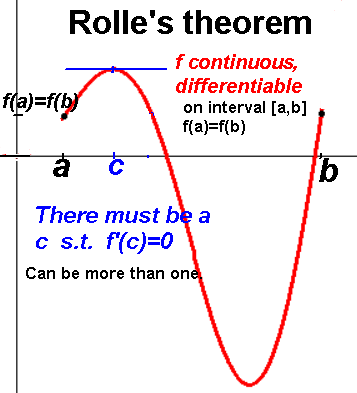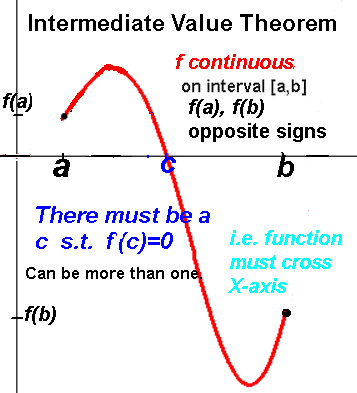If a car trip's average speed was 50 MPH, then there was a point during the trip when the car was going exactly 50 MPH:
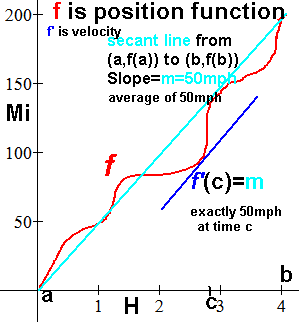
At some time c the slope of the tangent line (this slope is the car's instantaneous
rate of change, i.e. its velocity) is the same as the average velocity of the
trip (the slope of the secant line between the car's positions at the start and end
of the trip).
If the average rate of temperature change of something/someplace in some time period
was T degrees per time_unit, then at some point(s) in that period the temperature's
rate of change must have been exactly T degrees per time_unit.
If your average rate of weight or blood pressure or cholesterol level etc change
in some time interval was Y per X, then there must have been a time
in that interval when it was exactly Y per X.
In any "nice" function ƒ (i.e. continuous and differentiable)
the average rate of change of any closed interval [a,b]
is the slope mI of the secant line between (a,ƒ(a)) and (b,ƒ(b))
AND SO
there is [at least one] a point (c,ƒ(c)) (c being in the interval [a,b])
where the instantaneous rate of change
is the same as the interval's average rate of change,
i.e. the slope of the tangent line at that point (c,ƒ(c))
is the same as the slope of the interval's secant line,
i.e. the tangent line to that point is parallel to the interval's secant line,
i.e. the derivative of ƒ ƒ' evaluated at c is
equal to mI:
ƒ'(c)=mI

Find the c by solving ƒ'(x)=mI for x.
There's a value, c, whose tangent line slope is the same as
the average (mean) slope of the interval.
The secant line, a kind of average slope of the interval, is always
matched by a tangent line with the same slope.
The derivative ƒ'(x) always has a point when x=c on its curve
whose value ƒ'(c) is equal to the slope of the interval's secant line.
? Is the slope of the secant line the average (ie. arithmetic mean)
of all tangent lines' slopes in the interval?
Examples:

